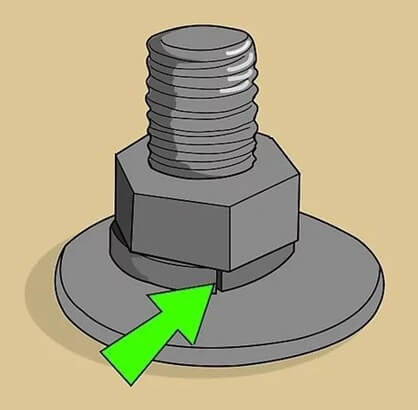How Do Spring Washers Work and When to Use Them
Spring washers are locking washers that are used when there is a need to prevent a fastener from loosening as a result of vibration. They are also often called split lock or split ring washers. A spring washer has a split in the washer section that when tightened each side of the split bites into the nut and the mounting surface. This “bite” prevents any anti-clockwise rotation from occurring under vibration.
There are two types of spring washer, square and rectangular section. This refers to the shape of the split end section.
An easy way to tell the difference is that when viewed from above, rectangular section spring washers look flatter than the square section variants, which look a lot more rounded.
So how does a spring washer actually work?
Spring washers use tension force to lock the nut into place. As the washer is tightened under load, the vertical cut ends of the washer grab the nut and bind against it.
When the nut is fully tightened, the split in the washer should still be slightly out of alignment. This is visual proof that the spring washer is still operating as intended and actually exerting a force on the fastener, as shown in the image below;
| SPRING WASHER |
 |
If the nut is overtightened the effect of the spring washer is drastically reduced, as the split ends of the washer are then brought into alignment as the washer is flattened, reducing or completely removing any tension on the fastener.
Where does a spring washer locate?
Spring washers should be used on the nut side of the fastener. If an additional washer is required to spread the load (as in our image above) it should be used between the spring washer and the mounting surface, i.e. the spring washer should be positioned next to the nut.
Are there any alternatives to spring washers?
This very much depends on the application. There are various types of locking nuts that will maintain the integrity of the fastener under vibration, and other types of locking washers. Nyloc nuts are an example of one type of commonly used locking nut.
Nordlock washers are the Rolls-Royce of locking washers. Acting as a matched pair, Nordlock washers are a cleverly engineered invention that are heavily favoured in industrial applications.



